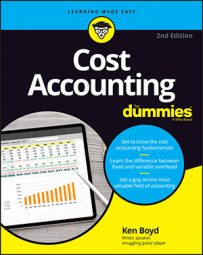Cost accounting is a great tool to improve the profitability in any business. It’s a critical subject that accounting students need to learn to be successful in their careers. However, some cost accounting concepts are easily misunderstood and therefore difficult to address correctly on exams. These test-taking strategies will help you succeed on a cost accounting exam by clarifying what is truly being asked in each question.
Read the last sentence first. Cost accounting questions often provide lots of data, but not all of that information is needed to answer the question. Test item writers refer to that data as distractors. If you start at the top and read down, you read a lot of unneeded data. Read the last sentence first. That strategy gets you to what the question is truly asking. Then you can read the rest of the question — and pull out only the data you need to answer the question.
Absorption costing vs. variable costing: The only difference between these two costing methods is how they address fixed manufacturing costs. A typical question on this topic lists variable manufacturing costs, or fixed selling and administrative costs. Don’t be fooled! Absorption and variable costing treat these other costs in the same way, so ignore them.
Favorable vs. unfavorable variances: Of course, the word favorable means better or preferred. However, in cost accounting, favorable has a different meaning, depending on whether you’re talking about a cost or revenue. Less actual costs than budgeted is a favorable variance. However, more actual revenue than planned is a favorable variance. In both cases, your actual profit is more than planned. Unfavorable variances are the reverse: More actual costs and less actual revenue is unfavorable.
Production costs: Many cost accounting questions relate to production of a physical product (rather than a service). Make sure you’re clear on whether the question is asking about units of a product, or an amount of material needed per unit. For example, one bicycle (one unit) requires two wheels. Be clear on which item (units or wheels) you’re using when you calculate costs.
Total fixed costs vs. fixed costs per unit: Some cost accounting questions provide you with a fixed cost per unit. If you determine that you need fixed costs to answer the question, pause for a minute. Try to find total fixed costs in the question and use that number. Fixed costs per unit should be avoided. That’s because, at some point, you sell enough to cover your costs. As a result, the additional units you produce don’t have any fixed costs attached to them. Fixed cost per unit is misleading.
Process costing: Process costing questions often address how costs move from one production department to another. Keep in mind that, almost always, material costs are put into production before labor costs. If you’re making leather baseball gloves, you need material (leather) in production before you can do anything to it (cut, sew, treat the leather, and so on). If you keep that in mind, computing material and labor costs may be easier.

